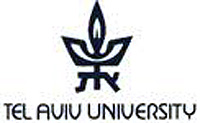 TEL AVIV, Israel (Press Release) –A groundbreaking study conducted by Tel Aviv University (TAU) researchers has identified the seismic signature of Hamas forces’ movement before the October 7th attack, analyzing data recorded at three seismic stations in southern Israel. They believe the discovery demonstrates the potential usage of seismic-based sensing technology to provide early warnings of terrorist activity.
TEL AVIV, Israel (Press Release) –A groundbreaking study conducted by Tel Aviv University (TAU) researchers has identified the seismic signature of Hamas forces’ movement before the October 7th attack, analyzing data recorded at three seismic stations in southern Israel. They believe the discovery demonstrates the potential usage of seismic-based sensing technology to provide early warnings of terrorist activity.
The study was led by Dr. Asaf Inbal of the Department of Geophysics at TAU’s Porter School of the Environment and Earth Sciences and Sackler Faculty of Exact Sciences. It was published on November 27, 2024, in The Seismic Record, a journal of the Seismological Society of America.
The findings reveal that on the morning of October 7th, approximately half an hour before the deadly terrorist assault, the stations recorded weak but widespread human-induced seismic noise. The researchers attribute these anomalous seismic amplitudes to the unusual movement of heavy vehicles within the Gaza Strip heading toward organizational points along the Israeli border up to 20 minutes before the ground barrier breach.
The researchers explain that forensic seismology is often used to monitor conventional and nuclear explosions. However, this is the first time in history that weak ground motions resulting from preparations for a terrorist attack have been identified by analyzing the characteristics of seismic noise induced by vehicular traffic.
The researchers emphasize that the identification of these movements in Gaza was conducted retrospectively, months after the attack.
“The Israeli Geological Survey operates a nationwide network of dozens of highly sensitive seismometers that continuously monitor ground motions,” Dr. Inbal explains. “This network is primarily designed to detect and locate earthquakes and provide warnings of strong ground shaking caused by large-magnitude seismic events.
“However, three stations in the network — located in Amazia, Ktsiot, and Yatir, between 30 and 50 kilometers from Gaza — recorded unusual seismic noise levels early in the morning of October 7th, 2023. This noise can be attributed with confidence to the vehicular activity in Gaza as Hamas terrorists gathered for the attack. The time frame was between 6:00 and 6:30 am, before the rocket fire began. The likelihood that the recorded signals originated from Gaza is over 99.9%.”
Although the seismometers are designed to detect extremely weak ground motions, Dr. Inbal points out that the ability to link the seismic noise to Gazan vehicle movements was facilitated by the quiet background seismic noise levels that prevailed in southern Israel during the early hours of that Saturday morning, which coincided with the holiday of Simchat Torah.
“On the morning of the attack, when local activity near the stations was minimal, we found unique widespread seismic amplitudes, which monotonically increased with time approaching the attack,” Dr. Inbal says. “No known natural or human source on the Israeli side could have generated seismic signals with a distribution and intensity similar to those attributed to Hamas movements.
“Although the outdoor music festival near Re’im generated some seismic noise, our analysis shows that this noise does not match the strength or location of the noise sources recorded by the Israeli seismic network on October 7th.”
The analysis indicates the seismic noise detected began at 6:00 am and intensified as the attack approached. Occasionally, the noise contained short bursts strong enough to pinpoint their source and track their progress. The location and intensity of these sources in Gaza suggest vehicle movements advancing southward and northward within Gaza, from Rafah in the south to the Erez crossing in the north, during the 30 minutes leading up to the attack.
“This development results from five years of seismological research aimed at characterizing seismic noise generated by human activities,” Dr. Inbal concludes. “We hope this new knowledge will lead to the expanded use of such tools for both security and industrial purposes. Graduates of TAU’s Department of Geophysics are playing a leading role in scientific and technological advancements, and we are confident that in the future, multi-purpose seismic-sensing technologies will be more widely used in various fields that impact our daily lives.”
*
Preceding provided by the American Friends of Tel Aviv University